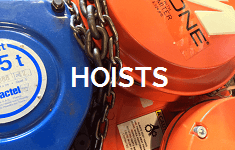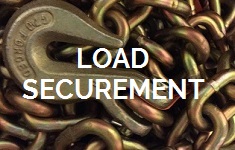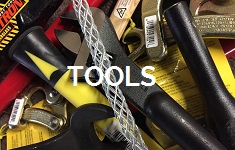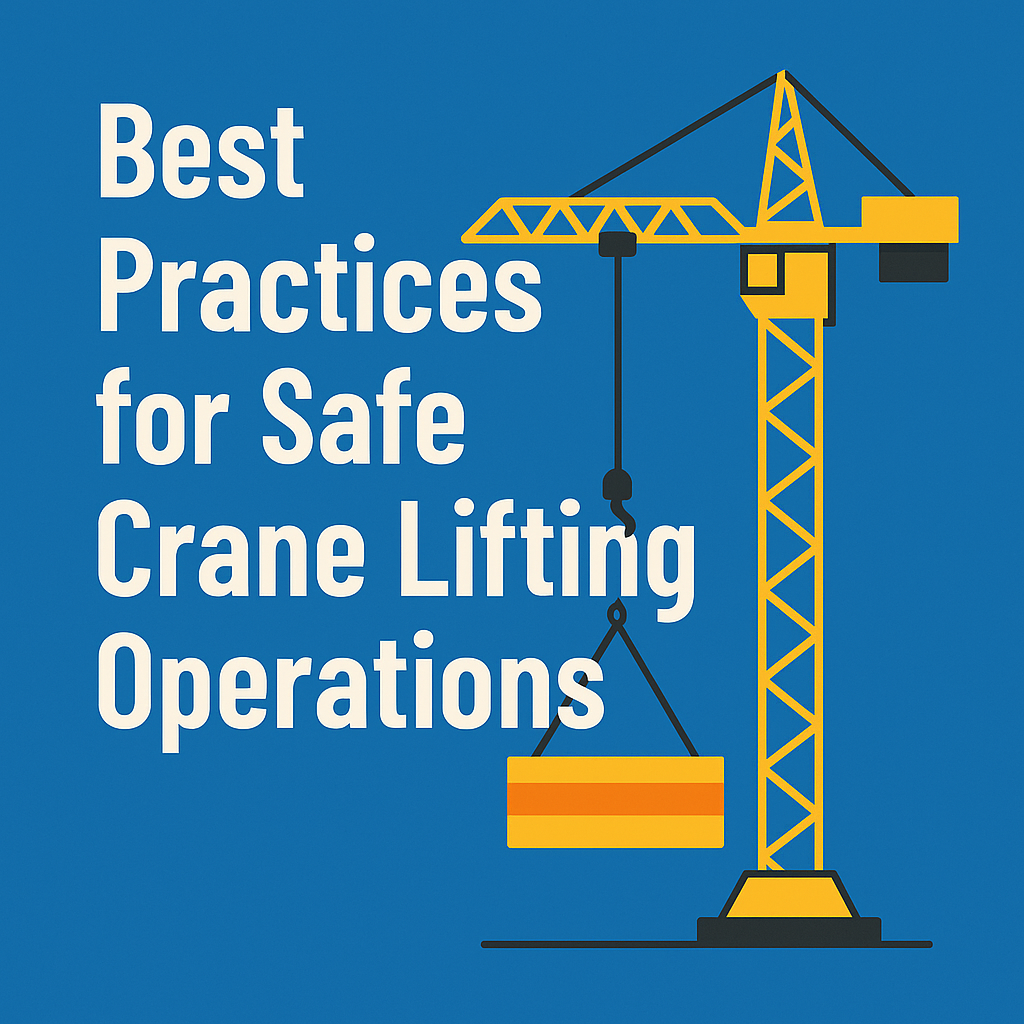If you’re responsible for crane operations or work near cranes, you understand the critical importance of safety protocols. Whether you’re managing a construction site, overseeing industrial operations, or ensuring compliance with safety regulations, implementing proper crane lifting practices can mean the difference between successful operations and catastrophic accidents. This comprehensive guide provides the essential knowledge and actionable steps you need to create and maintain a culture of crane safety.
Best practices for safe crane lifting operations are systematic safety protocols encompassing pre-lift planning, equipment inspection, operator certification, communication systems, and regulatory compliance designed to prevent accidents during hoisting operations. According to the Bureau of Labor Statistics, 2017: crane-related incidents caused 297 fatalities from 2011-2017, averaging 42 deaths annually in the United States.
“Of 319 OSHA investigated incidents, 97% could have been prevented by proper training,” states the Konecranes Training Institute, 2020, emphasizing the critical role of education in crane safety.
Pre-lift planning assesses site hazards and conditions, lift planning considers weather factors and team roles, load calculations ensure proper rigging selection, pre-use inspections identify equipment issues, inspection frequency follows OSHA-mandated schedules, common issues include mechanical wear and compliance violations, operators require national certification, signal persons need evaluation and testing, certifications maintain five-year validity periods, signal methods include standardized hand gestures, hazard communication follows emergency protocols, PPE provides essential protection barriers, lift zones require secured control measures, emergency procedures address mid-lift incidents, weather conditions affect operational decisions, OSHA standards govern all operations, documentation maintains compliance records, and regulatory changes require continuous monitoring.
One practical tip: conduct daily visual inspections focusing on hooks, wire ropes, and control mechanisms before any lifting operation begins. This introduction establishes the foundation for understanding how integrated safety systems, rigorous training protocols, and regulatory compliance work together to create safer crane operations across all industries.
What Are the Key Pre-Lift Planning Steps for Crane Operations?
Pre-lift planning steps for crane operations include comprehensive site hazard assessment, detailed lift planning with weather and team considerations, and proper load calculations with rigging selection. OSHA regulations mandate these planning phases to ensure safe lifting operations and prevent incidents that could result in injury or equipment damage.
The following sections detail the critical assessment, planning, and calculation phases that must occur before any crane lifting operation begins.
How Do You Assess Site Hazards and Conditions Before a Lift?
Site hazard assessment begins 1-2 weeks before the scheduled lift operation. This timeline allows adequate preparation for equipment positioning 3-5 days prior and final safety preparations 24-48 hours before the lift.
Legal requirements mandate surveying the site and establishing a comprehensive Lift Plan before completing Contract Lift crane hire arrangements. This ensures the lifting operation receives adequate planning and meets regulatory compliance standards.
Site Survey Steps Include:
- Evaluate site conditions and ground stability
- Identify potential hazards and obstacles
- Determine load requirements and lift specifications
- Verify access routes and setup space availability
- Establish exclusion zones for personnel safety
Ground stability must support both crane weight and operational loads. Use crane mats or outrigger floats when ground conditions require additional support distribution. Remove physical obstacles, address utility line hazards, and establish clearly marked exclusion zones to protect personnel during lifting operations.
This thorough site assessment creates the foundation for safe crane operations and informs all subsequent planning decisions.
What Factors Should Be Considered During Lift Planning?
Lift planning factors include crane configuration specifications, weather condition monitoring, and clearly defined team roles and responsibilities. OSHA 1926.1417 outlines specific requirements for competent person oversight during these planning phases.
When traveling with loads, a competent person must supervise operations and determine if rated capacity reduction becomes necessary. According to OSHA 1926.1417(u)(2), this includes evaluating load position, boom location, ground support adequacy, travel route safety, overhead obstructions, and appropriate movement speeds.
Weather Considerations Include:
- Wind speed monitoring and operational limits
- Ice and snow effects on equipment stability
- Storm warning response procedures
- Equipment securing protocols during adverse conditions
OSHA 1926.1417(n) requires competent persons to adjust equipment and operations addressing wind, ice, and snow effects on stability and rated capacity. When local storm warnings are issued, OSHA 1926.1417(h) mandates determining whether manufacturer recommendations for securing equipment must be implemented.
Equipment must operate with counterweight or ballast in place as manufacturer-specified, and maximum counterweight limits specified by the manufacturer cannot be exceeded per OSHA 1926.1417(aa).
Comprehensive lift planning ensures all operational variables receive proper consideration before lifting operations commence.
How Can You Ensure Proper Load Calculations and Rigging Selection?
Proper load calculations require operators to verify loads remain within rated capacity through industry-recognized weight sources or approved calculation methods. OSHA 1926.1417(o)(3) allows beginning hoisting operations to determine if loads exceed 75% of maximum rated capacity using load weighing devices.
Load weight calculations must ensure loads fall within the Working Load Limit (WLL) of all rigging equipment in use. These calculations must factor in all operational variables that could affect lifting capacity and safety margins.
| Rigging Factor | Consideration | Impact |
| Load Weight | Manufacturer specifications or calculations | Determines crane capacity requirements |
| Center of Gravity | Load balance point assessment | Affects rigging configuration selection |
| Sling Configuration | Angle and attachment methods | Influences load distribution and capacity |
| Environmental Variables | Wire rope stretch and chain pitch variation | Requires safety factor adjustments |
Rigging Selection Criteria:
- Determine accurate load weight and center of gravity
- Select appropriate lifting hardware and rigging equipment
- Choose proper sling configuration for load characteristics
- Account for center of gravity changes and sling length variations
OSHA 1926.1417(o)(1) prohibits operating equipment in excess of its rated capacity under any circumstances. Proper load calculations and rigging selection ensure compliance with this fundamental safety requirement.
These calculation and selection processes form the final critical step in pre-lift planning, ensuring all lifting operations remain within safe operational parameters and regulatory compliance standards.
How Does Crane Inspection and Maintenance Contribute to Safe Lifting?
Crane inspection and maintenance form the foundation of safe lifting operations by preventing equipment failures, ensuring regulatory compliance, and protecting workers from potentially fatal accidents. Regular inspections identify wear patterns, mechanical issues, and safety hazards before they compromise lifting operations. According to OSHA investigations of 249 overhead crane incidents, 1,013 OSHA violations resulted in 180 injuries and 161 fatalities, with 97% of these incidents preventable through proper maintenance protocols.
The following sections outline specific inspection procedures, frequency requirements, and common safety issues that maintenance programs must address to ensure crane operations meet safety standards.
What Are the Recommended Procedures for Crane Pre-Use Inspections?
Crane pre-use inspections require comprehensive daily visual examinations that identify damage, wear, or abnormalities in crane components before operation begins. OSHA mandates that operators perform thorough visual inspections every day before use, focusing on critical safety components such as deformed or cracked hooks and non-compliant rope reeving.
Daily inspection protocols must include these essential elements:
- Control mechanisms and brake functionality
- Load rating charts and visibility conditions
- Wire rope condition and hook integrity
- Electrical and hydraulic systems
- Ground conditions and safety devices
- Unusual noises during operation
OSHA 1926.1417(s) requires operators to test brakes each time a load reaches 90% or more of maximum line pull by lifting the load a few inches and applying brakes. This brake test ensures stopping capability under maximum stress conditions.
Strong maintenance routines begin with consistent daily checks performed before and after each crane use. These pre-use inspections create the first line of defense against equipment failures that could result in serious injuries or fatalities during lifting operations.
How Frequently Should Cranes Be Inspected and Maintained?
Crane inspection frequency follows a structured schedule combining daily checks, monthly documentation, and annual comprehensive evaluations by qualified personnel. OSHA requires equipment inspection at least every 12 months by a qualified person, with annual inspections based on anniversary dates per OSHA 1926.1412.
OSHA establishes two inspection categories under 29 CFR 1910.179:
- Frequent inspections: Daily to monthly intervals for active equipment
- Periodic inspections: Annual intervals (1 to 12 months maximum)
Cranes in regular use must maintain documented inspection checklists at least monthly using frequent inspection protocols. Equipment idle for 1 to 6 months requires complete inspection before returning to service.
Three types of overhead crane maintenance ensure comprehensive safety coverage:
- Routine Maintenance: Daily operational checks and basic component care
- Mandatory Compliance Inspections: OSHA-required frequent and periodic inspections
- Preventive Maintenance: Scheduled component replacement and system upgrades
This multi-tiered approach ensures cranes remain safe and compliant throughout their operational lifecycle while preventing unexpected failures during critical lifting operations.
What Common Issues Are Identified During Crane Inspections?
Crane inspections reveal mechanical wear, safety violations, and operational hazards that contribute to workplace injuries and fatalities. A comprehensive review of 249 overhead crane incidents identified 1,013 OSHA violations, demonstrating how inspection failures directly correlate with safety outcomes.
The most critical safety statistics from crane incident investigations include:
- 46% of serious injuries and fatalities involve workers struck by loads
- 97% of 319 OSHA-investigated incidents could have been prevented through proper training
- Mechanical issues and OSHA compliance failures represent the primary violation categories
Common inspection findings include:
- Worn or damaged wire ropes and rigging equipment
- Brake system malfunctions or inadequate stopping power
- Hydraulic leaks and electrical system failures
- Structural damage to crane components
- Missing or damaged safety devices
- Ground instability and improper crane setup
These inspection findings highlight the critical importance of thorough maintenance programs that address both mechanical integrity and regulatory compliance. Regular inspections provide early warning systems that prevent minor issues from escalating into major safety hazards during crane operations.
Effective inspection programs establish clear documentation trails that demonstrate compliance with OSHA standards while protecting workers from the significant risks associated with crane lifting operations.
What Training and Certification Are Required for Safe Crane Operation?
Training and certification requirements for safe crane operation involve mandatory national certification for operators, qualified signal person evaluation, and ongoing education programs. OSHA established November 10, 2018 as the compliance date for crane operator certification in construction, with all 50 states now requiring certification. This section covers personnel training requirements, certification processes, and ongoing safety education programs.
Who Should Be Trained to Operate and Signal Cranes?
All crane operators in construction must obtain national certification starting November 10, 2018 and undergo re-testing every 5 years. Signal persons require evaluation by a third party or employer, must demonstrate knowledge of crane signals and operations, and pass both oral/written and practical examinations.
A qualified signal person provides a second set of eyes during operations and must understand the specific signal types being used. According to OSHA 1926.1428, when hand signals are used, the signal person must know and understand the Standard Method for hand signals. OSHA 1926.1419 mandates that only one person may give signals to a crane or derrick at a time, except in specific emergency circumstances.
Key training requirements include:
- Signal comprehension and crane operation understanding
- Written, oral, and practical test completion
- Third-party or employer evaluation certification
- Standard hand signal method proficiency (OSHA 1926.1428)
What Certifications Must Crane Operators and Riggers Obtain?
Crane operators must be 18 years or older, meet ASME physical and medical requirements, and agree to comply with NCCCO’s Code of Ethics and Substance Abuse Policy. The certification process requires passing a physical examination, substance abuse test, and valid written and practical examinations.
According to OSHA 29 CFR 1926.1427, employers must ensure their crane operators are certified. However, OSHA does not require certification for operators of cranes with lifting capacities of 2,000 pounds or less. Vision requirements specify 20/30 vision in one eye and 20/50 in the other (with or without corrective lenses).
The NCCCO certification process involves:
- Written Core examination completion
- Specialty examination passage
- Practical examination demonstration
- 5-year certification card validity period
- Physical and substance abuse testing requirements
All 50 states now require crane operator certification per OSHA standards, ensuring consistent safety standards nationwide.
How Can Ongoing Training Improve Overall Lifting Safety?
Ongoing training improves lifting safety through accredited Continuing Education Credits (CECs) for recertification and performance evaluation programs. Operators earn CECs by taking courses and workshops related to crane operation safety, ensuring current knowledge of best practices and regulations.
Professional crane training extends beyond theoretical knowledge to essential skill development for safe and efficient operations. Training effectiveness measurement involves tracking performance metrics and implementing interactive training scenarios. Operator performance evaluation criteria include determining load weight and manufacturer’s rated capacity of crane/hoist equipment.
Continuing education benefits include:
- Updated safety regulation knowledge
- Enhanced operational skill development
- Performance metric tracking and improvement
- Interactive scenario-based learning
- Load calculation and capacity determination skills
This comprehensive training approach ensures operators maintain current competencies and adapt to evolving safety standards throughout their careers.
How Can Effective Communication Improve Crane Lifting Safety?
Effective communication improves crane lifting safety by establishing clear signal protocols, maintaining constant hazard awareness, and ensuring all personnel can see and hear critical safety information. Communication failures contribute to crane accidents, making standardized signals and PPE visibility requirements essential for preventing injuries and fatalities.
Clear communication protocols coordinate complex lifting operations where multiple team members must work together. Operators, signal persons, and ground crews depend on immediate, accurate information exchange to respond to changing conditions and maintain safe operations throughout each lift.
Which Signal Methods Are Most Effective During Lifting Operations?
The most effective signal methods during lifting operations include OSHA-standardized hand signals and radio frequency communications, with hand signals serving as the primary method and radio systems providing backup when visibility is compromised.
OSHA 1926 Subpart CC Appendix A defines 19 Standard Hand Signals, such as the STOP signal executed with arm extended horizontally to the side, palm down, swinging back and forth. These standardized signals eliminate confusion and ensure consistent interpretation across different job sites and crews.
Radio-controlled cranes use radio frequency signals with transmitter and receiver systems to control crane movements wirelessly. Radio communication reduces injury risk by enabling communication between crane operators and longshore personnel when the load being lifted is not visible to the crane operator or when hand signals may not be clearly visible due to distance or obstructions.
The combination of visual and radio communication provides redundant safety systems that maintain contact even when environmental conditions limit one method’s effectiveness.
How Should Hazards and Emergency Procedures Be Communicated?
Hazards and emergency procedures should be communicated through immediate stop signals, maintained operator attention protocols, and readily accessible operating procedures in the crane cab at all times.
Anyone who becomes aware of a safety problem must alert the operator or signal person by giving the stop or emergency stop signal according to OSHA 1926.1417(y). This universal alert system ensures that any team member can halt operations when they identify potential dangers.
Operators must not engage in practices that divert attention while operating equipment, such as using cellular phones except for signal communications, as required by OSHA 1926.1417(d). Maintaining focused attention allows operators to receive and respond to hazard communications immediately.
All procedures applicable to equipment operation, including rated capacities, load charts, recommended operating speeds, special hazard warnings, instructions, and the operator’s manual must remain readily available in the cab at all times per OSHA 1926.1417(c)(1). This immediate access to safety information supports quick decision-making during emergency situations.
What Role Does Personal Protective Equipment Play in Communication?
Personal protective equipment plays a communication role by enhancing visibility of personnel and protecting communication devices, with high-visibility vests and hard hats making workers easily identifiable to crane operators and signal persons.
OSHA requires all personnel involved in overhead crane operations to wear appropriate PPE, including hard hats, safety glasses, and gloves. Standard PPE for crane operations includes hard hats, safety glasses, high-visibility vests, steel-toe boots, gloves, hearing protection, and fall arrest equipment.
High-visibility vests serve as communication tools by making ground personnel visible to crane operators from elevated positions. Managers should choose lightweight yet collision-resistant helmets for crane operators to ensure comfort during long operations while maintaining protection.
PPE requirements are determined by hazard assessment for personal protective equipment under 29 CFR 1910.132, ensuring that protective equipment supports rather than hinders communication between team members during lifting operations.
This comprehensive communication approach creates multiple layers of safety coordination that prepare crews for the critical safety protocols required during active crane lifting operations.
What Safety Protocols Must Be Followed During Active Crane Lifting?
Safety protocols during active crane lifting create protective barriers between operators and catastrophic incidents. According to OSHA data, 72% of crane incidents occurred during routine operations, making active lifting protocols essential for preventing the majority of workplace accidents.
How Should the Lift Zone Be Secured and Controlled?
Lift zone security requires establishing clear boundaries and maintaining safe distances throughout operations. Site preparation involves removing obstacles, addressing utility hazards, and establishing exclusion zones for personnel to prevent unauthorized access during active lifting.
OSHA mandates minimum clearance requirements of 3 inches overhead and 2 inches laterally between crane and obstructions per 29 CFR 1910.179. Modern safety technology includes mid-range distance measurement sensors that reliably detect approaching cranes and stationary walls up to 50 meters away, providing automated hazard detection.
Essential Lift Zone Control Measures:
- Remove all obstacles from swing radius and travel paths
- Establish exclusion zones with physical barriers or flagging
- Position spotters at critical visibility points
- Install proximity sensors for automated collision detection
- Maintain communication channels between all zone personnel
These protocols establish multiple safety layers that prevent personnel exposure and equipment damage during active operations.
What Steps Should Be Taken if an Emergency Occurs Mid-Lift?
Emergency response during mid-lift situations requires immediate action and automated safety systems. Anyone who becomes aware of a safety problem must alert the operator or signal person by giving the stop or emergency stop signal according to OSHA requirements.
Load Moment Indicators automatically restrict further movements that would increase risk when loads approach critical limits, typically at 90-100% of rated capacity. According to a 2019 Crane Institute study on load monitoring systems, automated restriction systems reduced overload incidents by 67% across monitored operations.
Critical Emergency Response Actions:
- Issue immediate stop signal using standardized hand or radio commands
- Activate Load Moment Indicator restrictions if load exceeds safe parameters
- Engage anti-collision systems to prevent crane-to-crane contact
- Lower load to nearest safe position if movement remains possible
- Evacuate personnel from potential impact zones
Anti-collision systems designed to prevent crane-to-crane and crane-to-end-stop collisions provide automated protection when manual response may be insufficient.
How Can Weather and Environmental Conditions Affect Lift Safety?
Weather conditions directly impact crane stability and load control during active operations. When wind speed (sustained or gusts) exceeds 20 mph at personnel platform locations, a qualified person must determine if it is not safe to lift personnel according to OSHA 1926.1431.
Operations typically cease when winds reach 20 mph, especially when handling lighter or bulkier loads that create larger surface areas for wind resistance. A 2020 National Institute for Occupational Safety and Health study on weather-related crane incidents found that 34% of weather-related accidents occurred in wind speeds between 15-25 mph.
Wind Speed Categories for Mobile Crane Operations:
| Condition | Wind Speed (mph) | Operational Status |
| Very Calm | Below 4.47 | Normal operations |
| Calm | 4.48-11.16 | Standard precautions |
| Low | 11.17-22.36 | Enhanced monitoring required |
Competent persons must adjust equipment and operations to address effects of wind, ice, and snow on equipment stability and rated capacity. Environmental monitoring ensures lifting operations remain within safe parameters as conditions change throughout the workday.
What Are the Legal and Regulatory Requirements for Crane Lifting Operations?
Legal and regulatory requirements for crane lifting operations are established primarily through OSHA standards that vary by industry and equipment type. These comprehensive regulations cover everything from equipment specifications to operator certification requirements, ensuring consistent safety practices across all crane operations.
Understanding these requirements helps companies maintain compliance while protecting workers and avoiding costly violations. The regulatory framework includes specific documentation requirements, regular updates to standards, and varying state-level requirements that must be monitored continuously.
Which OSHA Standards Govern Crane Safety?
OSHA standards governing crane safety include 29 CFR 1926.1400-1442 (Subpart CC) for construction operations and 29 CFR 1910.179 for general industry applications. Subpart CC addresses power-operated equipment used in construction work designed to hoist, pull, lower, and horizontally move suspended loads. The General Industry standard applies specifically to overhead or gantry cranes permanently installed in facilities.
OSHA Directive CPL 02-01-063, issued February 11, 2022, provides updated enforcement guidance for the Cranes and Derricks in Construction Standard. These regulations address crane, derrick, and hoist safety hazards across multiple industries including general industry, maritime, gear certification, and construction sectors.
| Standard | Application | Coverage |
| 29 CFR 1926.1400-1442 | Construction | Power-operated hoisting equipment |
| 29 CFR 1910.179 | General Industry | Overhead and gantry cranes |
| CPL 02-01-063 | Construction Enforcement | Updated compliance guidance |
What Documentation Is Needed to Remain Compliant?
Documentation needed for compliance includes monthly inspection checklists for cranes and hoists in regular use, annual inspection records by qualified personnel, and operational procedures readily available in the cab. The Small Entity Compliance Guide for the Final Rule for Cranes and Derricks in Construction (OSHA Publication 3433, 2014) provides detailed documentation requirements.
Annual inspection documentation must be completed at least every 12 months by a qualified person, with records maintained according to OSHA standards. Procedures applicable to equipment operation, including rated capacities, operating speeds, hazard warnings, and operator manuals, must be accessible to operators at all times during equipment operation.
How Should Changes in Regulations Be Monitored and Implemented?
Changes in regulations should be monitored through official OSHA updates and implemented according to specified compliance dates. The final rule established November 10, 2018 as the compliance date for crane operator certification requirements in construction, while OSHA Directive CPL 02-01-063 updated enforcement standards in February 2022.
Seven states issue state licenses for crane operators: Connecticut, Massachusetts, Montana, New Jersey, New Mexico, Pennsylvania, and Rhode Island. States vary in specific crane operator requirements, with some requiring additional certification beyond federal standards and others operating under OSHA State Plans that may have different enforcement approaches.
Effective regulatory monitoring involves establishing systems to track federal updates, state-specific requirements, and industry guidance documents. Companies should designate responsible personnel to review regulatory changes quarterly and implement necessary updates to policies, training programs, and documentation systems within specified timeframes.
How Should You Approach Safe Crane Lifting Operations with a Professional Lifting Partner?
Approaching safe crane lifting operations with a professional lifting partner requires selecting certified providers who demonstrate comprehensive safety protocols, training expertise, and regulatory compliance. Professional lifting partners integrate all critical safety elements—from pre-lift planning through post-operation documentation—while maintaining strict adherence to OSHA standards and industry best practices.
The following sections outline how professional partners enhance safety outcomes and the essential takeaways from implementing these best practices nationwide.
Can Tway Lifting Help With Safe Crane Lifting Solutions and Training?
Tway Lifting provides comprehensive crane lifting solutions that integrate all safety protocols discussed throughout this guide. The company delivers certified crane operators, OSHA-compliant equipment inspections, and customized training programs that address the specific requirements outlined in 29 CFR 1926.1400-1442.
Their services include pre-lift planning assessments, load calculation verification, and on-site safety supervision by qualified personnel. Tway Lifting’s approach encompasses the critical elements that prevent the 97% of incidents that could be avoided through proper training and protocol adherence.
Key service offerings include:
- Certified crane operators meeting NCCCO requirements
- Daily and periodic equipment inspections per OSHA standards
- Site hazard assessments and lift plan development
- Signal person training and evaluation programs
- Emergency response protocols and communication systems
The company maintains documentation systems that ensure compliance with inspection requirements and provide the readily available procedures mandated by OSHA 1926.1417(c)(1). This comprehensive approach addresses both the technical and regulatory aspects that contribute to safe lifting operations.
What Are the Key Takeaways About Best Practices for Safe Crane Lifting Operations We Covered?
The statistical evidence demonstrates the critical importance of implementing comprehensive safety protocols in crane operations. According to Bureau of Labor Statistics Census of Fatal Occupational Injuries data, 297 total crane-related deaths occurred from 2011-2017, averaging 42 fatalities per year nationwide.
The leading cause of fatal crane injuries involves being struck by objects or equipment, accounting for 51% of all fatalities. Texas experienced the highest fatality rate with 50 deaths from 2011-2017, exceeding the combined total of the next three states.
Training emerges as the most significant prevention factor. Analysis of 319 OSHA-investigated incidents reveals that 97% could have been prevented through proper training and protocol implementation. This underscores the value of certified operators, qualified signal persons, and comprehensive safety education programs.
The economic impact extends far beyond immediate operational costs:
- Average major injury cost exceeds $200,000
- Average fatality cost surpasses $4 million
- 319 OSHA investigations resulted in more than $2.9 million in fines
- Total estimated economic impact exceeded $500 million
These statistics reinforce that investing in professional lifting partners, certified training, and comprehensive safety protocols delivers both human safety benefits and substantial economic protection. Implementing the best practices covered—from thorough pre-lift planning through ongoing maintenance and training—creates measurable risk reduction that protects both personnel and project investments.










